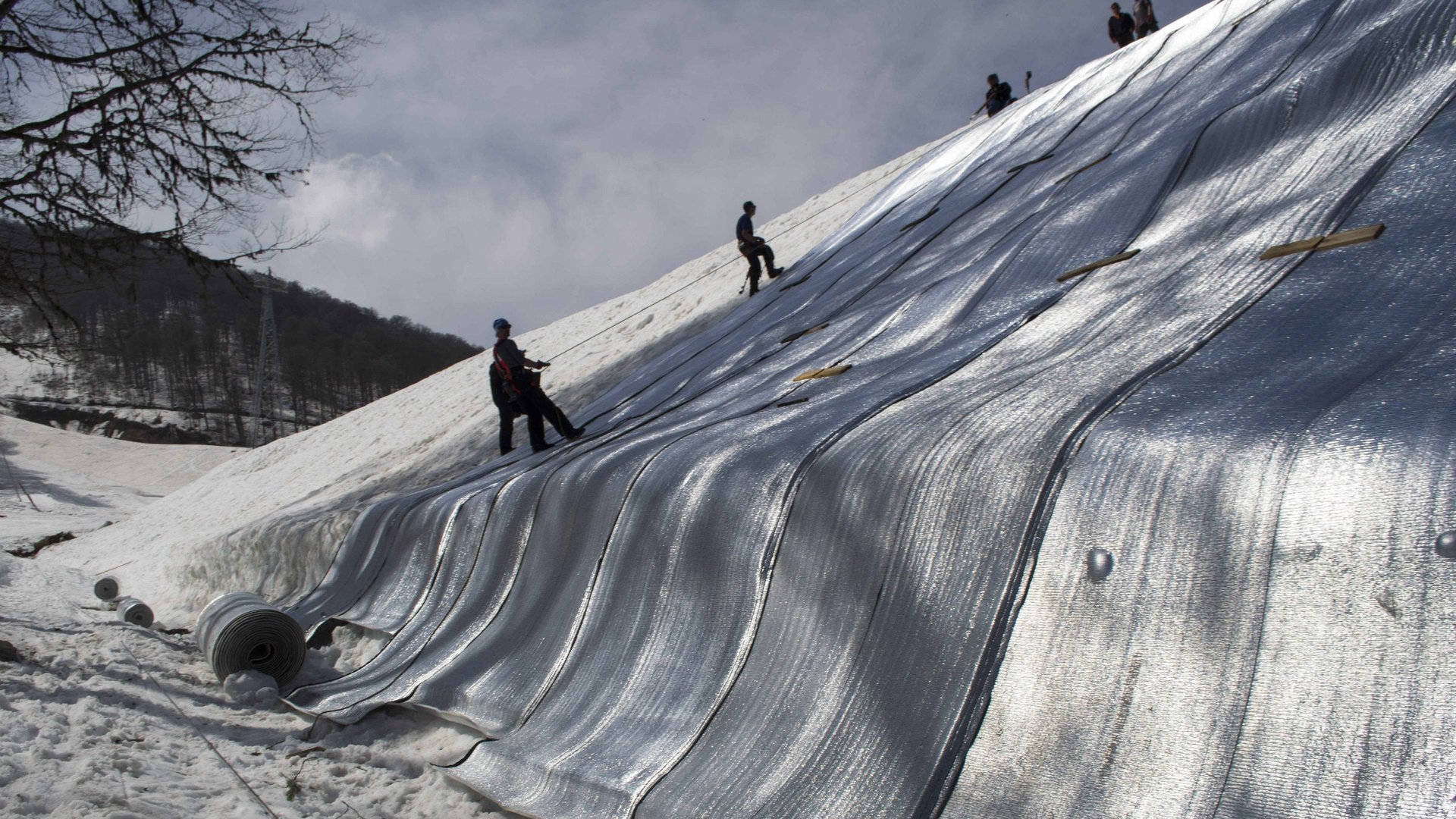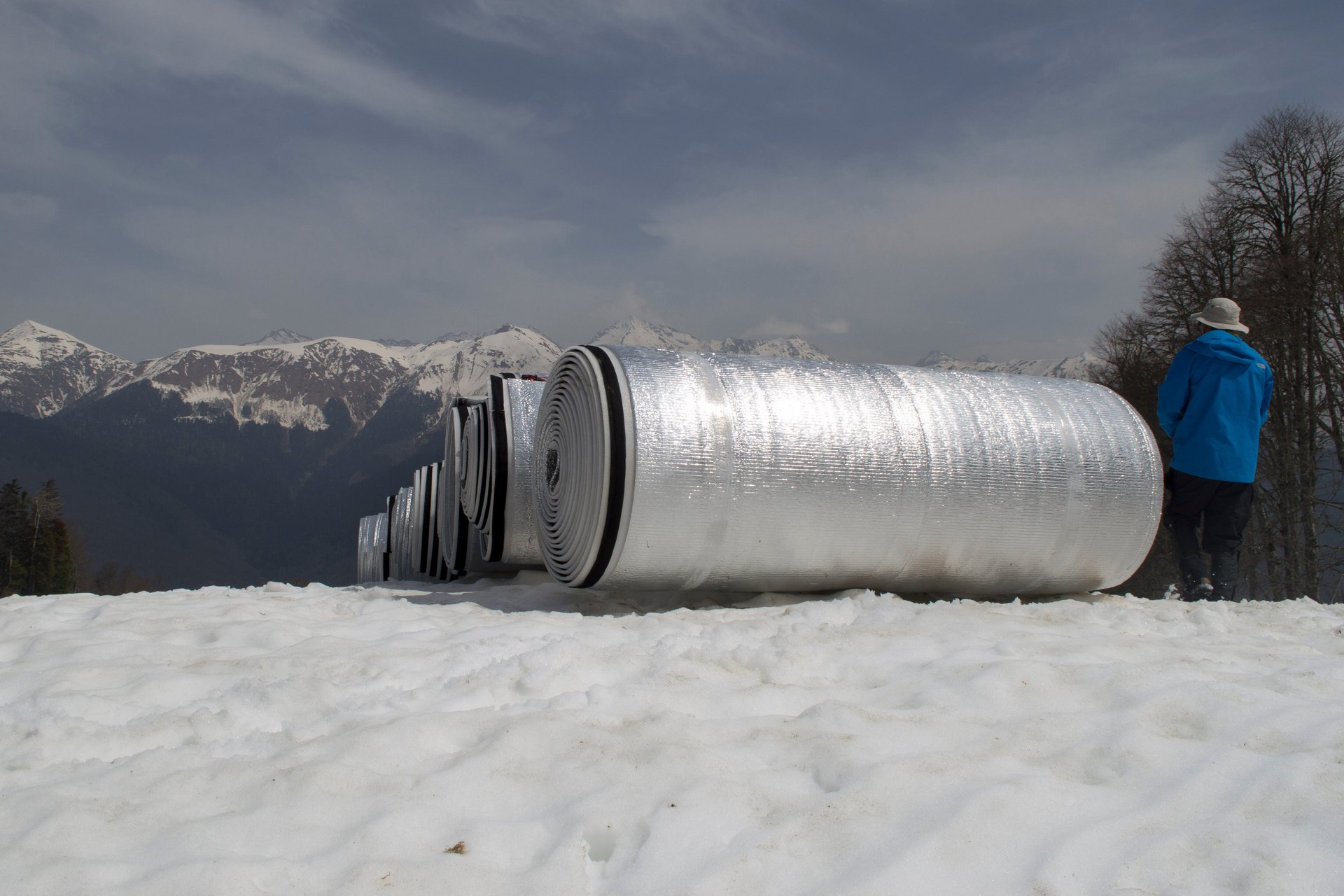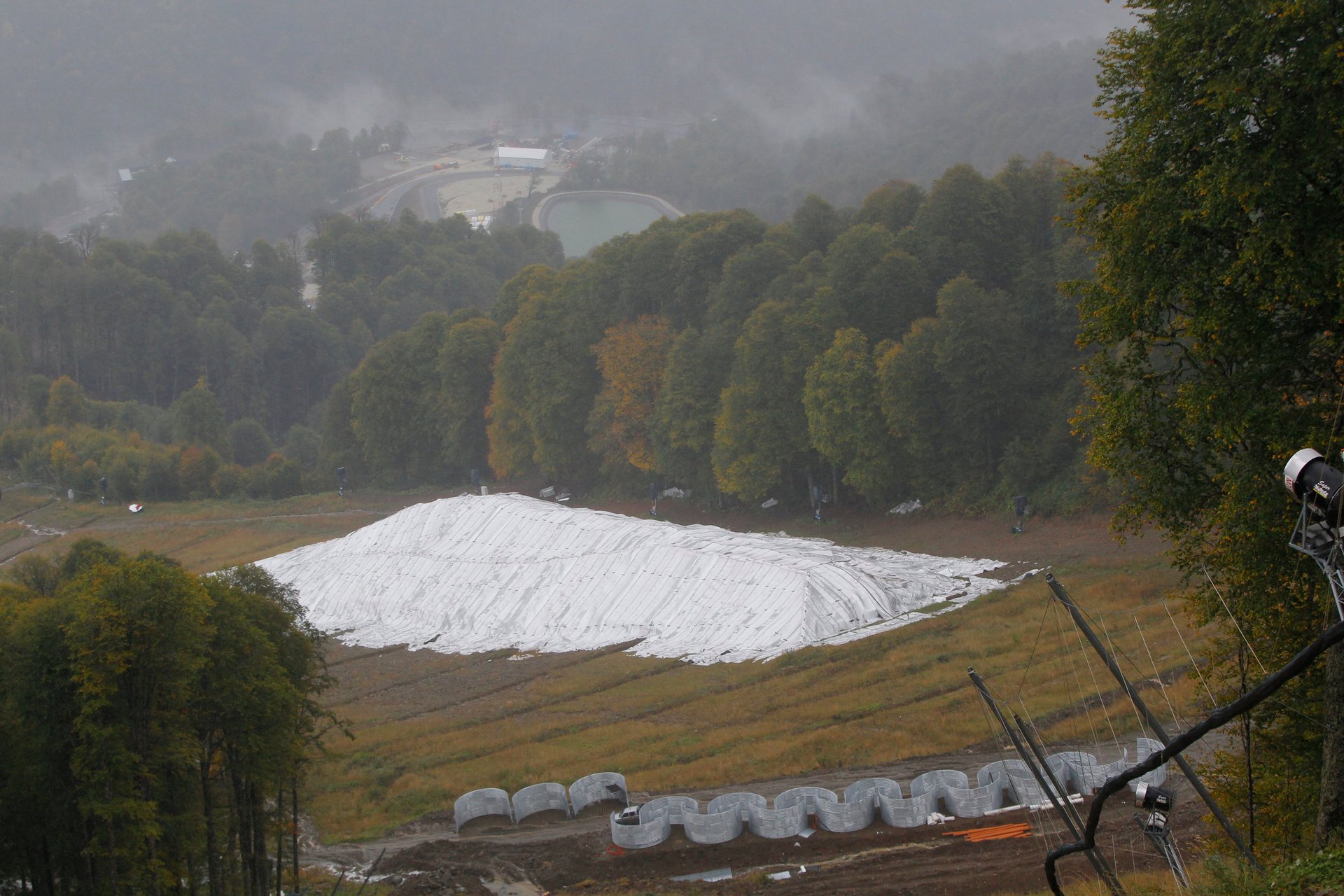Russia hoarded 400,000 tons of snow for over a year so it could save the Olympics this week
The palm trees lining the boulevards give it away: It can get pretty warm in Sochi. In fact, it hit a high of 61°F (16°C) in the city yesterday, and wasn’t much cooler today. Even higher temperatures are forecast for later this week.


The palm trees lining the boulevards give it away: It can get pretty warm in Sochi. In fact, it hit a high of 61°F (16°C) in the city yesterday, and wasn’t much cooler today. Even higher temperatures are forecast for later this week.
Of course, temperatures are much chillier up in the mountains, and despite some grumbles about the mushiness of the snow, the Olympic alpine events have so far gone off without a hitch. But officials are worried about the mush turning to slush, so they have dipped into vast stockpiles of powder squirreled away over the past two winters, it was reported today.
That’s right: Sochi tapped its strategic snow reserve. Around 710,000 cubic meters (25 million cubic feet) of snow have been hoarded near the skiing and snowboarding venues, shielded from the elements by thick reflective blankets designed to keep the powder intact. These stockpiles became tourist attractions in themselves during the summer. At 400-600 kilograms per cubic meter, we’re looking at a mid-range guess of 355,000 tonnes (391,000 tons) of the white stuff.
The thick, watery snow that has been stored in this way—some melting is inevitable—will serve as an emergency base layer over which a lighter dusting of man-made flakes from hundreds of snow cannons is sprayed. This elaborate setup is the work of Mikko Martikainen, a Finn hired as the event’s official snow consultant.
There are two ways to look at the Olympic organizers’ latest effort to boost the snowpack at balmy mountain venues. The first is that it shows the sort of long-term thinking and meticulous planning of which, recent press coverage would have you believe, Russia is supposedly incapable. Contrast it with the 2010 Olympics in Vancouver, where organizers scrambled at the last minute to airlift more than 5,000 cubic meters of snow from distant peaks to the Cypress Mountain freestyle skiing and snowboarding venue on the outskirts of the city.
The less charitable take on Sochi’s snow stockpile is that it’s the predictable result of hosting the games in a subtropical climate. That the organizers needed to stockpile snow from two winters to ensure proper coverage is proof of the folly of holding the games there. With February temperatures in Pyeongchang, South Korea, host of the 2018 Winter Olympics, rarely rising above freezing, this won’t be a problem the next time around. Then again, it won’t be nearly as comfortable for fans who like to watch skiing in the morning and stroll along the seaside in a t-shirt in the afternoon.


